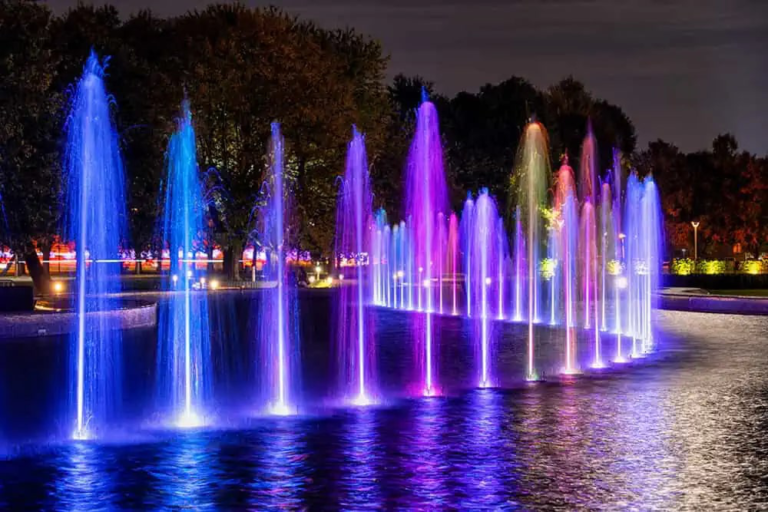Underwater fountain lights are not only instrumental in enhancing the visual appeal of fountains but also serve practical purposes in creating safe, well-lit outdoor environments. While the aesthetic benefits of underwater fountain lights are undeniable, it is essential to consider practical considerations when installing them. In this article, we will explore the practical aspects of installing underwater fountain lights, including installation methods, maintenance requirements, and safety considerations. By understanding these practical considerations, fountain designers and enthusiasts can ensure the successful implementation of their lighting projects and maximize the longevity and performance of their fountain lights.
Choosing the Right Lighting Fixtures
Table Of Contents
Selecting High-Quality Fixtures
When it comes to underwater fountain lights, quality is paramount. Selecting high-quality lighting fixtures is essential to ensure durability, reliability, and optimal performance. Look for fixtures that are specifically designed for underwater use and constructed from corrosion-resistant materials such as stainless steel or marine-grade aluminum. These materials are resistant to rust and corrosion, ensuring that the lights can withstand exposure to water and harsh environmental conditions without deteriorating or malfunctioning prematurely.
LED vs. Halogen Lights
Another important consideration when choosing underwater fountain lights is the type of lighting technology to use. LED lights have become increasingly popular in recent years due to their energy efficiency, long lifespan, and versatility. LED lights consume less energy than traditional halogen lights and have a significantly longer lifespan, reducing maintenance and replacement costs over time. Additionally, LED lights produce less heat, making them safer for use in underwater environments where heat dissipation may be a concern. While LED lights may have a higher upfront cost, their long-term benefits make them a cost-effective and sustainable lighting solution for underwater fountains.
Installation Methods
Professional Installation
Installing underwater fountain lights is a complex and specialized task that should be performed by qualified professionals with experience in water feature lighting. Professional installers have the expertise and knowledge to ensure that the lights are installed correctly and safely, minimizing the risk of damage to the fountain or electrical system. Additionally, professional installers can advise on the best placement and configuration of lights to achieve the desired lighting effects and ensure uniform illumination throughout the fountain.
Submersible vs. Surface-Mounted Lights
There are two main types of underwater fountain lights: submersible and surface-mounted. Submersible lights are designed to be fully submerged underwater, providing a seamless and integrated lighting solution that enhances the aesthetic appeal of the fountain. Surface-mounted lights, on the other hand, are installed above the water surface and directed downwards towards the fountain, providing illumination from above. The choice between submersible and surface-mounted lights depends on factors such as fountain design, lighting goals, and maintenance preferences. Submersible lights are ideal for creating dramatic underwater effects and minimizing light pollution, while surface-mounted lights offer ease of installation and maintenance.
Maintenance Requirements
Regular Inspections and Cleaning
Proper maintenance is essential to ensure the continued performance and longevity of underwater fountain lights. Regular inspections and cleaning are necessary to remove debris, algae, and other contaminants that can accumulate on the light fixtures and affect their performance. Inspect the lights periodically to ensure that they are free from damage, corrosion, or water ingress. Clean the light fixtures with a soft brush and mild detergent to remove dirt and grime, taking care not to damage the seals or electrical components. Additionally, check the electrical connections and wiring to ensure they are secure and free from corrosion or damage.
Replacement of Bulbs and Parts
Over time, underwater fountain lights may require bulb replacement or parts replacement due to wear and tear or damage. LED lights typically have a longer lifespan than halogen lights, but they may still need occasional bulb replacement as they age. When replacing bulbs, choose bulbs that are compatible with the existing fixtures and wiring to ensure proper performance and compatibility. Additionally, keep spare bulbs and parts on hand to facilitate quick and easy repairs in case of emergencies or unexpected failures.
Safety Considerations
Electrical Safety
Safety should always be a top priority when installing and operating underwater fountain lights. Ensure that all electrical work is performed by qualified professionals in accordance with local building codes and regulations. Use waterproof electrical connectors, cables, and junction boxes to protect against water ingress and electrical hazards. Additionally, install ground fault circuit interrupters (GFCIs) to provide protection against electric shock in the event of a fault or malfunction.
Water Quality and Environmental Impact
Consider the impact of underwater fountain lights on water quality and the surrounding environment. Choose lighting fixtures and materials that are non-toxic and environmentally friendly to minimize the risk of contamination or harm to aquatic life. Additionally, avoid using excessive lighting or bright colors that may disrupt natural ecosystems or wildlife behavior. Strike a balance between aesthetics and environmental sustainability to ensure that your fountain lighting project enhances the beauty of the environment without causing harm or disturbance.
Read about here: Guia Silent Hill Geekzilla: Your Ultimate Guide
Conclusion
In conclusion, installing underwater fountain lights requires careful consideration of practical factors such as lighting fixtures, installation methods, maintenance requirements, and safety considerations. By choosing high-quality fixtures, selecting the right lighting technology, and following professional installation practices, fountain designers and enthusiasts can create stunning lighting effects that enhance the beauty and ambiance of their outdoor spaces. Regular maintenance and inspection are essential to ensure the continued performance and longevity of underwater fountain lights, while adherence to safety guidelines and environmental best practices helps minimize risks and promote sustainability. With proper planning and attention to detail, underwater fountain lights can elevate the aesthetic appeal and functionality of fountains, creating captivating and memorable experiences for all who encounter them.
